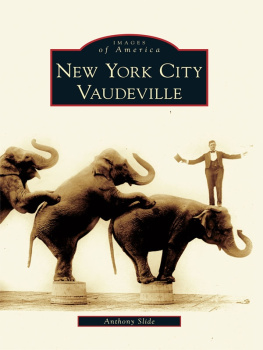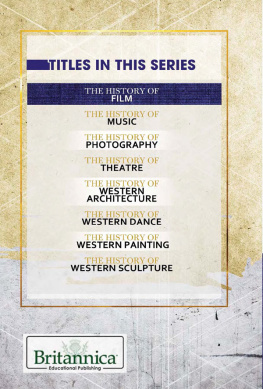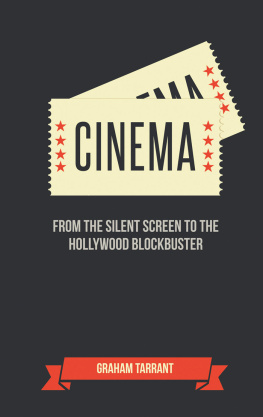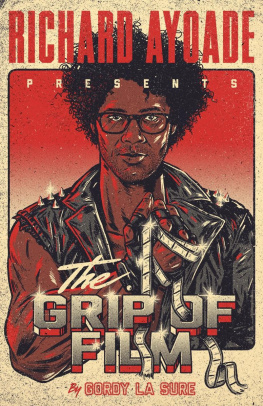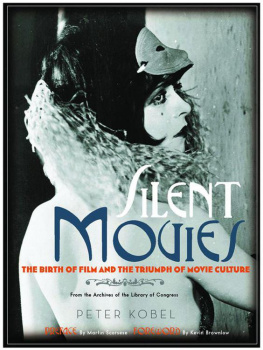MAGNIFICENT OBSESSION
MAGNIFICENT OBSESSION
The
Outrageous
History of
Film Buffs,
Collectors, Scholars,
and Fanatics
Anthony Slide

www.upress.state.ms.us
Designed by Peter D. Halverson
The University Press of Mississippi is a member of the Association of American University Presses.
Copyright 2018 by University Press of Mississippi
All rights reserved
Manufactured in the United States of America
First printing 2018
Library of Congress Cataloging-in-Publication Data
Names: Slide, Anthony, author.
Title: Magnificent obsession : the outrageous history of film buffs, collectors, scholars, and fanatics / Anthony Slide.
Description: Jackson : University Press of Mississippi, 2018 | Includes bibliographical references and index. |
Identifiers: LCCN 2017035688 (print) | LCCN 2017042952 (ebook) | ISBN 9781496815989 (epub single) | ISBN 9781496815996 (epub institutional) | ISBN 9781496816009 ( pdf single) | ISBN 9781496816016 (pdf institutional) | ISBN 9781496810533 (hardcover : alk. paper)
Subjects: LCSH: Motion picture audiences. | Fans (Persons) | Motion picturesCollectors and collecting. | Motion picturesStudy and teaching.
Classification: LCC PN1995.9.A8 (ebook) | LCC PN1995.9.A8 S57 2018 (print) | DDC 302.23/43dc23
LC record available at https://lccn.loc.gov/2017035688
British Library Cataloging-in-Publication Data available
Heres to you, please. Gravediggers, buzzards, scavengers!
Thats what you are! Dealing with dead and old stuff.
Heres to you. All of you.
Erich von Stroheim drinking a toast to the staff on a visit to the British Film Institute in the 1950s
CONTENTS
WARNING
This Book Contains Material That May Be Offensive to Film Buffs.
Discretion Is Advised.
Similarly, Because of Its Anecdotal Style,
Together with Some of the Authors Comments,
the Book May Well Offend Academics in the Film Community.
BECAUSE OF ITS SUBJECT MATTER, THIS BOOK WILL OUTRAGE A SMALL, inarticulate, but loudmouthed group of individuals, easily identifiable as todays film buffs. It is not intended for their pleasure, and obviously they will not believe anything to be found herein. Except perhaps heavily disguised, they, the living, will not find themselves in the pages of this book. What I have to say about them is too inflammatory for public consumption. I do write, and often with genuine affection, of many of the film buffs of the past, whom I knew and likedand who, most importantly, were kind and helpful to me. I will remember them with pleasure as I grow old and I see their hobby diminished by their successor film buffs. I similarly expect that academics will find much to criticize here, in large because I dismiss the jargon in which they delight, and I write for a discerning audience of which I do not consider them a meaningful part. Much here is not as well documented as I would like or as academics would expectnot that I do not find a surprising number of academic texts often to lack accurate sourcesand this is because I am relying on my memory of events and individuals, neither of which were committed to paper at the time.
It is the subject matter, in fact, that may not only antagonize but also confuse. While the basic story is that of the film buff, this volume also covers a wide range of supplemental and related issues, with which a film buff might be associatedfrom collecting autographs, film stills, and films themselves, to all the small industries that cater to their tastes (conventions, publications, etc.).
ACKNOWLEDGMENTS
HOW DOES ONE ACKNOWLEDGE WHAT IS PERHAPS ALMOST A LIFETIMES research, conducted not only in libraries and archives, but also, and more importantly, through interface with the subjects of this book, encountered through the years at paper shows, conventions, and film screenings? Sadly, libel laws prevent my naming and discussing many of todays film buffs, and so the emphasis of this volume is primarily on the past and almost exclusively on American film buffs.
In researching this book, I have made extensive use of the holdings of the Margaret Herrick Library of the Academy of Motion Picture Arts and Sciences and the Cinematic Arts Library (what a pretentious title) at the University of Southern California. Special thanks at the latter, as always, to Ned Comstock and Steve Hanson.
Among individuals who have been willing to talk or communicate with me while knowing of my plans are Cliff Adam, Catherine Barbour, Rudy and Stacey Behlmer, Joan Cohen, Bill Dowson (Deanna Durbin Society), Sue Garland (Appreciating Jeanette MacDonald Club), Robert Gitt, Jere Guldin, Patricia King Hanson, Mike Hawks, John T. Hillman, Richard Koszarski, Marv Lachman, Richard Lamparski (a great resource), Steve Lewis, Bennett Lovett-Graff, Leonard Maltin, Howard Mandelbaum, Jeffrey Mantor (Larry Edmunds Bookshop), Marsha McCreadie, the late George J. Mitchell, James Robert Parish, Gary Rhodes, Andre Soares, Eric Spilker, Lea Whittington, and Valerie Yaros.
Special thanks to Ronald Bowers, Eleanor Knowles Dugan, Ed and Mary Maguire, Charles Shibuk, Romano Tozzi, and Jerry Vermilye, who were there. Without William J. Felchner, it would not have been possible to write the chapter on Chaw Mank. Thanks to Bambi Everson for sharing memories of her father, and Brad Franklin for his amazing help with the chapter on his father, Joe Franklin.
There is much that is personal and subjective here, and so I recall with affection those who are no longer with us but who will live on, I hope, in part through participation in this volume: DeWitt Bodeen, Bob Chatterton, John Dewar, William K. Everson, George Geltzer, Robert Giroux, Herb Graff, Henry Hart, Larry Lee Holland, John LeBold, Robin Little, Don Miller, Norman Miller, Charles Phillips Reilly, and, yes, even David Bradley.
At the University Press of Mississippi, I would like to thank director Craig W. Gill, project editor Valerie Jones, designer Pete Halverson, and copy editor Peter Tonguette (who confesses that perhaps he is a film buff).
The illustrations in the book are primarily from the authors collection, with others provided by Catherine Barbour, Mike Hawks, Richard Lamparski, Bennett Lovett-Graff, Jeffrey Mantor, Gary Rhodes, Jerry Vermilye, and Marc Wanamaker/Bison Archives.
MAGNIFICENT OBSESSION
INTRODUCTION
FILMTHE MOTION PICTURE, THE MOVIES, CALL IT WHAT YOU WILLHAS been for more than a century the licit visual, and later vocal, drug of choice for the masses. It is the siren song for those seeking not simply entertainment or an escape from reality, but rather something to experience which does not cost too much and which gets one out of the house for a few hours. Simply put, the movies are there to entertain, and that they do very well, even if at times the purveyors of the medium do not fully understand what it is their audiences expect.
New movies attract the average man and woman, often in the twenty-first century much younger than they were a half-century earlier. To this group, an older film is one made a decade or so ago, and an older movie star is not Humphrey Bogart or James Cagney, but more likely Liam Neeson, Kevin Costner, or Russell Crowe. But there is a second, smaller, yet quite vocal group, and they are the ones to whom an old movie can have been made in the 1910s or the 1950s, though seldom little later, and they are the ones for whom most of the stars on whom they dote are no longer at Metro-Goldwyn-Mayer, which once boasted more stars than are in Heaven, but in a literal Heaven or its cinematic equivalent. They are the film buffs, to whom, as one writer put it, moviegoing in America is a blood sport,1 and for whom the local multiplex shows nothing of interest. If they actually attend a film screening, it will be at an art house or the local museum with attendant movie auditorium. More likely, they will be found on a Saturday night, or any other night of the week for that matter, at home with the television tuned to Turner Classic Movies. They get their advice on what to watch not from Kenneth Turan in the
Next page

